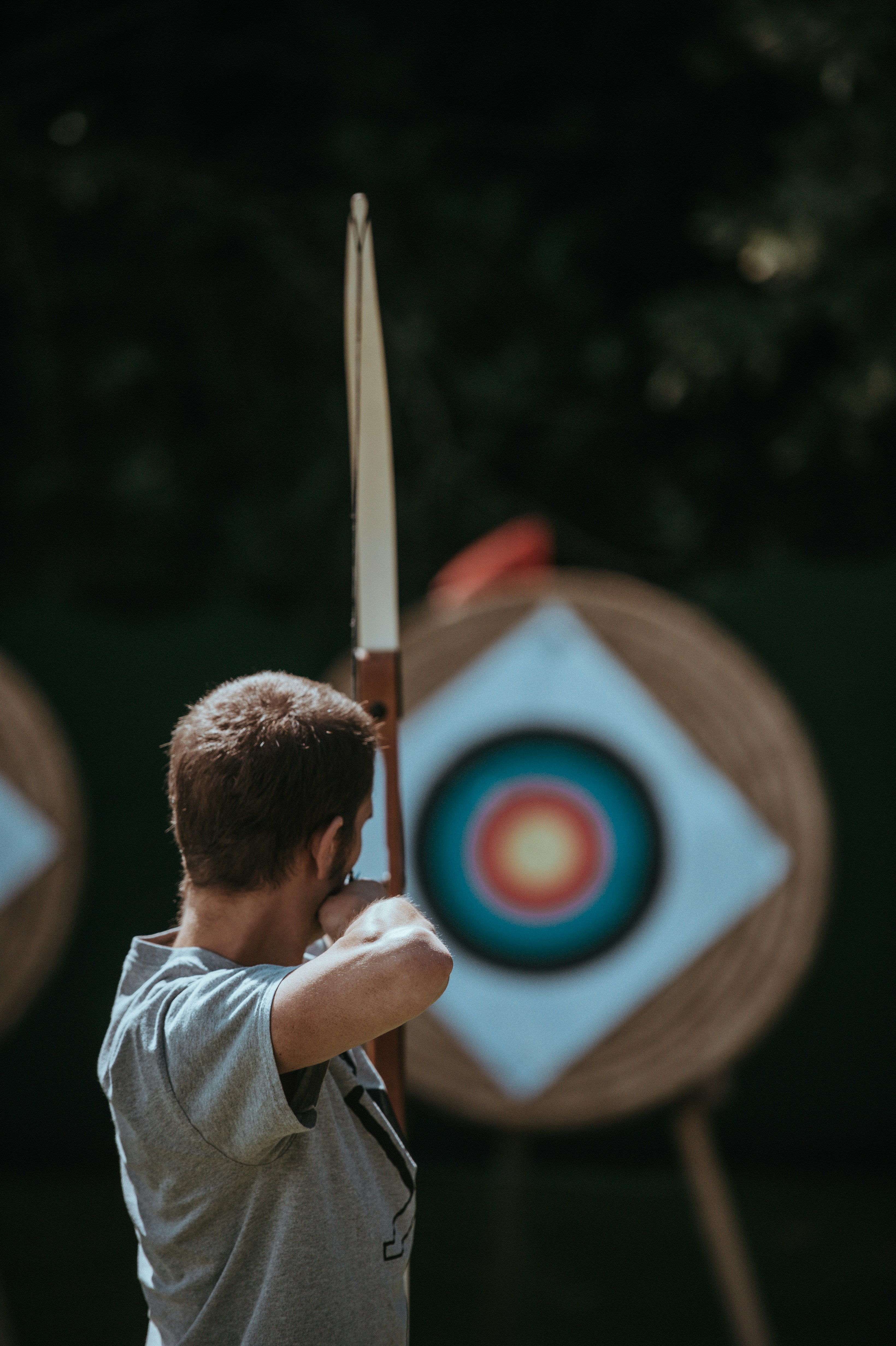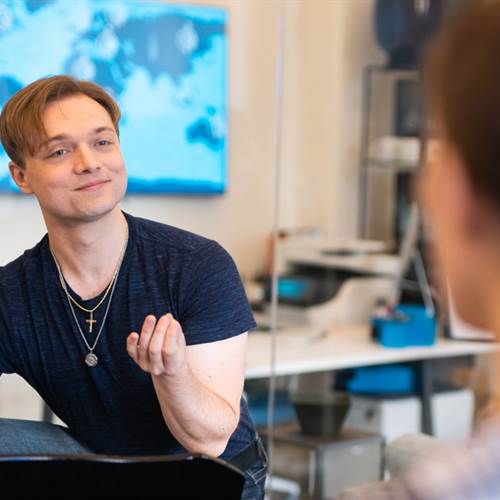
How To Practice Singing Part II: Practice with Intention
Posted Saturday, November 18th 2023 by Zac Bradford
This is part II of my series "How To Practice Singing", where I break down what makes productive practice sessions productive and how to implement efficient and effective practicing in your own practice sessions.
You can view part I of the series here, where I compared two different practicing styles: Striving vs Contentment.
As anyone who has embarked on working on a new skill can attest, learning to practice takes practice. Often it takes planning and trial and error to figure out how many practice sessions per week is ideal/sustainable, or how long in duration each session should be to optimize progress, both of these macro issues will be discussed in future articles in this series.
Recently I read a brilliant book, The Musician's Mind: Teaching, Learning, and Performance in the Age of Brain Science by Lynn Helding. In the book Helding makes some interesting distinctions on the topic of what practice is and isn’t. In Chapter 5 of her book, on the topic of Deliberate Practice Helding states “Practice is learning, and learning is messy… Performance, conversely, is all about best impressions, and therefore it is anything but messy”. (Helding, p.167)
This suggests that singing songs from start to finish is not necessarily practice either, as it is focused on rehearsing a “finished product” (if such a thing exists). Practice involves skill acquisition and development, in singing this involves motor learning. Practice is about learning, exploring and giving yourself permission to make mistakes. Practice requires a type of mental effort (not to be confused with strenuous laryngeal effort) that enables you to be deliberate about WHAT you are working to improve and HOW you are setting out to do it.
How do you measure the efficacy of your practice session?
If practice is measured by different standards than performance, how do you know if your practice is effective? Provided the material (songs or exercises) you are working on at an ideal level for your stage of development (not too challenging or too easy) the following points may be of use in helping you gain further clarity around the HOW and WHAT of practice, and subsequently increased efficacy in the micro aspects of practice.
Points to consider for optimizing practice
Step 1: Identify the WHAT
The WHAT is usually fairly obvious. It is the passage of the song (section, phrase or note) or exercise to be worked on. This includes its component parts, i.e. the melody, rhythm and lyrics (or in the case of an exercise vowels/consonants).
Being familiar with, or having memorized the “WHAT” will make it easier to direct attention to the HOW (which are outlined in the following steps). If you are not progressing in an aspect of your practice be sure to be familiar with the WHAT, or even better memorize the WHAT!
Step 2: Identify the GOAL
Have you ever asked yourself “what is it that I am trying to accomplish by practicing this exercise or by working through a particular passage in this song”? For example, is it to maintain better resonance awareness on the back vowels? Or to maintain legato phrasing in spite of the many consonants in the phrase? As the old saying goes “If you aim for nothing, you’ll hit it everytime”. Learning and developing vocal coordination is target practice, and developing a GOAL to facilitate that practice is crucial.
That said, just because you know where the target is doesn’t mean that you will hit it every time. In other words, knowing the target is necessary, but not alone sufficient for effective practice. Uncertainty with the GOAL can lead to confusion, or even worse frustration if you are approaching your practice in a way that runs counter to your exercise-specific GOAL.
Step 3: Identify the TACTIC
What tool, device, thought, cue or action will I use to help achieve this goal in the context of the exercise or song excerpt? Is the tactic to use a lip trill through the phrase in a song once before repeating it on the lyrics to assist with maintaining legato phrasing? Is it the action of tapping your cheek bones while singing the phrase to cue you to shape your vocal tract more optimally, resulting in sensations of vibrations towards the front of the face? Or is it a device like a balance board or drinking straw being used to help elicit a new coordination? TACTICS used wisely can be helpful in eliciting more efficient vocal coordinations and assisting focus.
Step 4: Identify where to place your ATTENTION
What is the most beneficial place to focus attention while singing the exercise/song? This takes trial and error to discover, and depends on stage of development and what works best for each individual singer.
There is a debate among researchers in the field of Attentional Focus on whether to focus internally or externally, which is beyond the scope of this article (this topic will be discussed in a future article). Often students remark “that exercise was easier when I don't overthink it”. Some go as far as to say, “I just need to stop thinking about it and then it's easier”.
In my experience, confusion reigns when singers attempt to focus on multiple cues at once, on the other end of the spectrum when singers are absent of any thought, results tend to be inconsistent. Optimal and consistent results tend to occur when the singer finds a singular helpful cue to pay ATTENTION to at a given time.
Step 5: Identify a MONITORING device
It is important to use reliable monitoring devices to guide you on whether or not you are moving in the right direction with a given practice task. Otherwise, repeating and establishing inefficient, counter-productive patterns of coordination may occur, much like ironing creases into clothing.
In a voice lesson, the teacher is generally the one doing the monitoring, providing feedback on whether you are moving in the right direction or not. Monitoring approaches may include using a mirror for visual feedback, bubble phonation which allows the singer to see how much/or little airflow they are using via the size of the bubbles in water, or tactile awareness by the singer placing their hands on their rib cage during inhalation to check that expansion is occurring.
You could say that MONITORING is very similar to the previous point, ATTENTION. That said, while all MONITORING may require a singers ATTENTION, not all attentional focus allows a singer to monitor their coordination. This commonly occurs when a singer is thinking about attempting to pay attention producing a lip rounded embouchure on an exercise. The singer is thinking about doing it, and is surprised when I ask them to maintain their current lip position and walk over to the mirror, only for them to see the corners of their lips spreading much more than they thought. In essence, a MONITORING device helps singers practice with more accuracy in the absence of a teacher.
Step 6: Identify a way of ASSESSING success/failure in goal
After each attempt or every few attempts of an exercise or song excerpt, ask the question “did I move closer to the goal or not”? If so, proceed and repeat.
A good general assessment tool/question is “did it feel easier”? “Was the physical effort less?” If the answer is yes, doing an appropriate amount of repetitions on this new found motor skill can help ingrain it. However, if it feels uncomfortable, or less efficient, this should be cause for pause. This is when it is important to ADJUST! In short, ASSESSING helps us determine whether we should repeat or ADJUST an exercise.
Step 7: ADJUST!
If things start to feel more effortful or moving away from your desired goal, then take time to look back and make an adjustment in one of the first six steps. Perhaps the tactic you are using is not helpful. Maybe you are placing your attention on an internal mechanical aspect of coordination and a more external focal point may be simpler and more useful. Being mindful with all of these points can aid in not only improving your vocal coordination, but also your awareness. Specifically enhancing your kinesthetic/proprioceptive awareness, which is one of the things that allows elite singers to sense changes in their body aiding in making adjustments in coordination when needed. This is something that we should all develop.
A couple of disclaimers!
- In practice, it is helpful when your awareness is non-judgmental. Ideally during monitoring and assessment your thoughts are neutral and focus on possible solutions rather than perceived problems. For example, in an attempt at an exercise you may miss the target/goal e.g. to have more freedom on your high C. In response, it may be tempting to have negative judgmental thoughts e.g. “that high C was awful!” This type of judgment often leads to counter productive tension and a series of negative & distracting thoughts. Rather, if you acknowledge that the attempt was too effortful, and then choose to focus on a possible solution e.g. “perhaps I need to focus on taking a deeper breath before the next attempt”. This type of non-judgmental awareness takes practice, time and mindfulness to develop, and was something I learned about years ago when I read Timothy Gallwey's best-selling book The Inner Game of Tennis.
- If the initial goal is more precision with intonation, or being louder on the climactic note of the phrase, it is important to ensure that you are not reaching these goals by any means possible. It is possible to get louder multiple ways. One way might be to make use of a more optimal type of resonance via a change in tongue position, while another way might be to increase the vocal fold compression and air pressure. While both are viable options, if the latter is done too excessively this could lead to the desired aesthetic result (louder volume) but at the cost of strain on your voice. The means whereby you achieve this goal is not sustainable. You may need to incorporate the functional coordination as well as the aesthetic result into your goal.
- Relating to the topic of effort, it is important to make the distinction between mental effort and strenuous effort. I often use the term effort to refer to stress/strain in the throat, i.e. “physical effort”. Regardless of any other goal, a larger goal should always be to reduce this type of strenuous effort for a given vocal task. It can be helpful to rate effort on a scale of 1-10. 1 being the easiest and 10 the most difficult. This can help guide whether you are heading in the right direction with your practice. The other type of effort that is common, and necessary is the mental effort it requires to focus on a new coordination, often associated with “Deliberate Practice”. The good news is that over time this type of mental effort will reduce as the skill becomes more automatic. On the other hand if the “physical/strenuous effort” is high then the singer will likely fatigue more quickly, and be at greater risk of voice injury.
If you are struggling to structure your practice sessions, or are not feeling that you are getting the most “bang for your buck” when it comes to practicing, I encourage you to be intentional about WHAT and HOW you are practicing. When it comes to making your practice session more effective, take time to identify as succinctly as possible: the WHAT, the GOAL, the TACTIC, where to place ATTENTION, a way of MONITORING, and a way of ASSESSING whether or not you achieved the goal. Remember to be flexible and ready to ADJUST any of these key points if you are not moving in the right direction. This all requires intention, and is best aided by a voice teacher who helps you to choose appropriate exercises, realistic goals, and provides feedback and suggestions of tactics that might be best for you.
References
- Lynn Helding,The Musician's Mind: Teaching, Learning, and Performance in the Age of Brain Science. Chapter 5, p.167.
- Timothy Gallwey, The Inner Game of Tennis.

Zac Bradford
Director of NYVC Australia/Voice Teacher Associate
Zac Bradford is the Director of NYVC Australia. His clients have reached the Top 10 on the Billboard charts, have been featured in Hollywood films, TV shows, have worked as backing singers for AAA touring artists, and are performing on Broadway, Off-Broadway, 1st US Tours, internationally, and more. His clients also perform in famous live music venues including Carnegie Hall, Lincoln Center, The Blue Note, Rockwood Music Hall and The Bitter End.

End of Year Thoughts from NYVC Founder and President, Justin Stoney
"I hope each singer finds one thing they have never done with their voice. A risk that they never taken, to stretch outside their comfort zone in ways they never have before." - Justin Stoney, NYVC President and Founder

Does Practicing Help? An Informal Study (Part I)
In this article, Andy King outlines his six-week study on students’ singing practice habits to examine consistency and motivation.

Setting SMART Goals
We all want something in this business. But what you want is different from what your best friend might want, even if it is the very same goal.